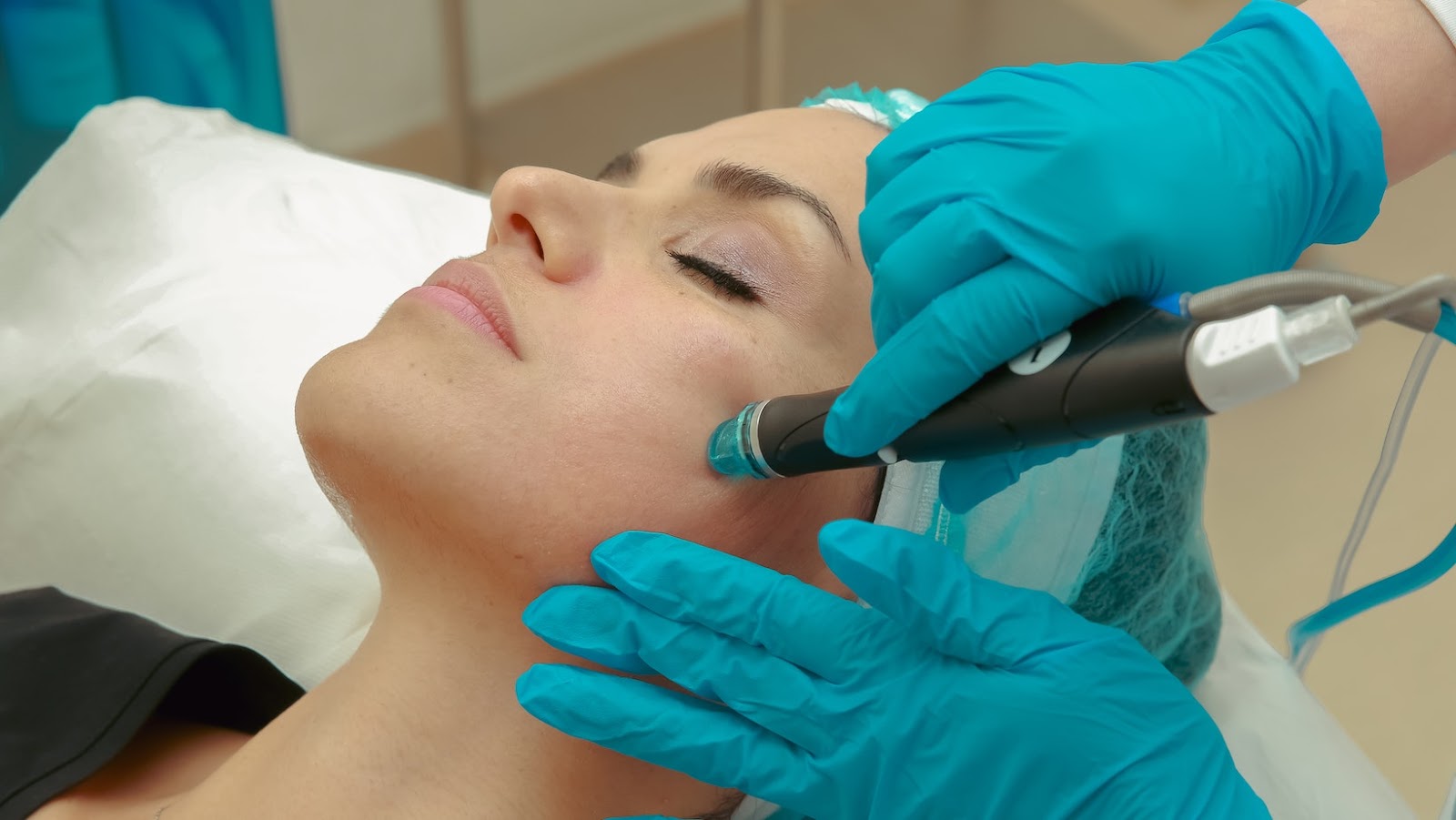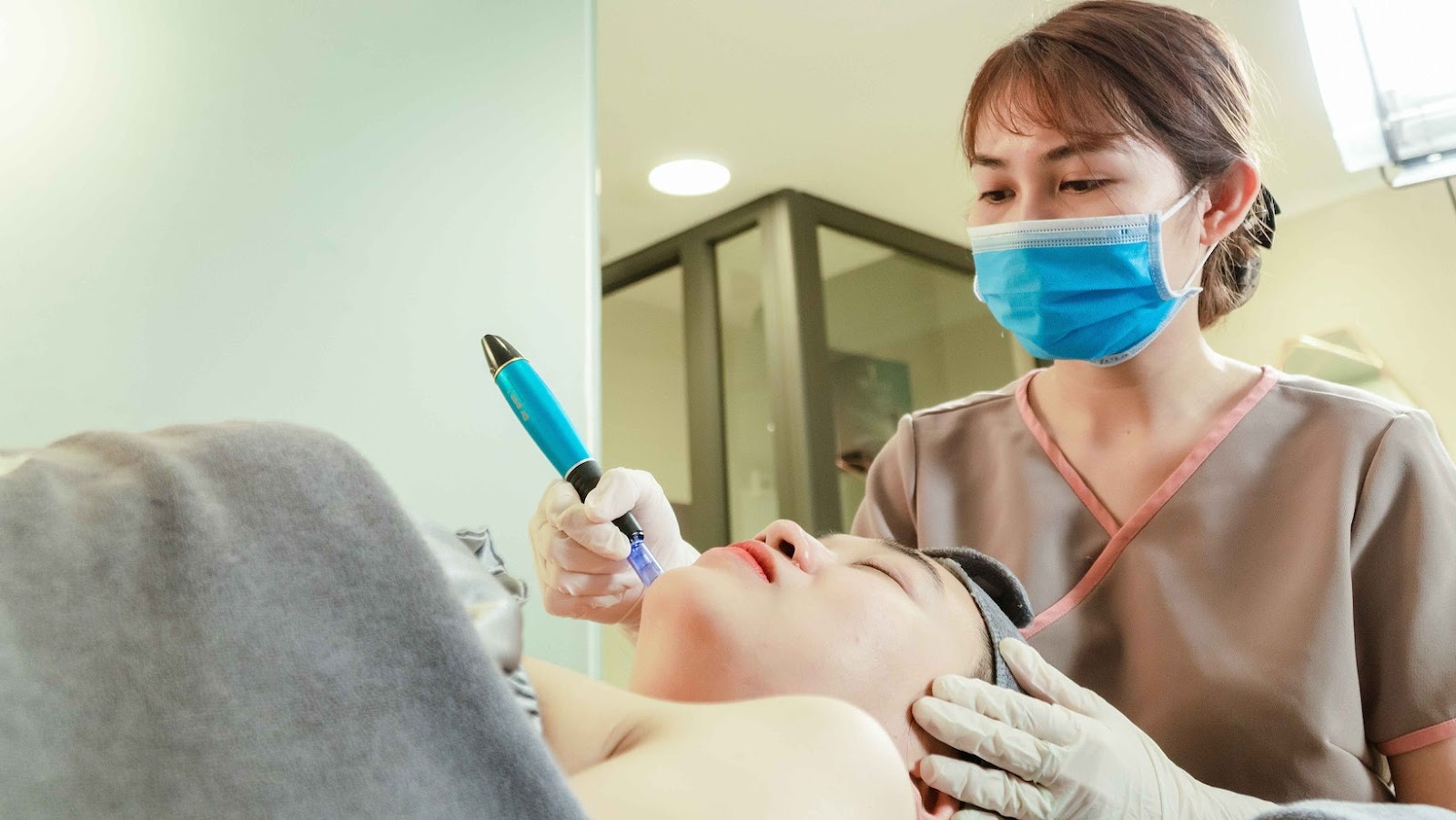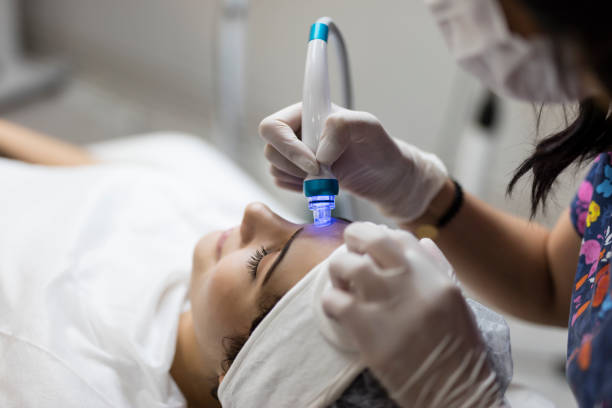Microdermabrasion is a popular cosmetic procedure that exfoliates and removes the superficial layer of dry, dead skin cells. While it can improve the overall appearance and texture of the skin, there are several drawbacks to consider before deciding whether it’s worth it.
The potential drawbacks of microdermabrasion include:
- Skin irritation, redness, and sensitivity after the treatment.
- The risk of infection or scarring if the procedure is not performed by a trained professional.
- The need for multiple treatments to achieve the desired results.
- The cost of the procedure, which can be expensive over time.
Ultimately, the decision of whether microdermabrasion is worth it depends on your individual skincare goals and budget. If you’re looking for a quick and affordable way to improve the overall appearance of your skin, microdermabrasion may be worth considering. However, if you have a history of skin sensitivity or require more significant changes, it may be worth exploring other options.
Potential Risks and Complications of Microdermabrasion
Microdermabrasion is a popular cosmetic procedure that has been used to treat a range of skin issues including sun damage, wrinkles, and acne scars. While it has been praised for its potential to improve skin tone and texture, there are some risks and complications associated with it that must be considered before deciding if the procedure is right for you.
In this article, we will discuss the potential risks and complications of microdermabrasion.
Skin Redness and Irritation
Microdermabrasion is a popular cosmetic procedure that exfoliates the skin and helps to reduce the appearance of fine lines, scars, and discoloration. However, it’s not without its risks and potential drawbacks. One of the most common side effects of microdermabrasion is skin redness and irritation. While this usually subsides within a few hours to a few days, it can be uncomfortable and unsightly. In some cases, the skin may even peel or flake off.
Other potential risks and complications of microdermabrasion include bruising, infection, and hyperpigmentation. While these are all rare, they can occur, particularly if the procedure is not performed correctly or if the patient has an underlying skin condition. Therefore, it’s important to weigh the benefits of microdermabrasion against the potential risks and complications before deciding if it’s worth it for you. Consulting with a licensed and experienced esthetician or dermatologist is key to ensuring that the procedure is performed safely and effectively.
Acne Breakout
While microdermabrasion is a popular treatment for acne, it does carry risks and potential complications that should be taken into consideration before deciding whether it is worth it for you. One of the most significant drawbacks of microdermabrasion is the risk of skin irritation and sensitivity following the treatment. Redness, itching, and flaking are common side effects that can last for days or weeks.
Additionally, if the treatment is performed too aggressively, it can cause scarring, hyperpigmentation, and infection. Finally, microdermabrasion is not a long-term solution for acne. While it can improve the appearance of acne-prone skin in the short term, it does not address the underlying causes of acne, such as hormonal imbalances or diet.
If you are considering microdermabrasion for your acne, it is essential to weigh the potential benefits against the risks and to consult with a dermatologist to determine if it is the best course of action for your specific skin concerns.
Infection
Microdermabrasion is a popular cosmetic procedure that involves the use of tiny crystals to remove dead skin cells and reveal brighter, smoother skin. While it is generally safe and effective, there are potential risks and complications to keep in mind before deciding if microdermabrasion is worth it for you. Some potential risks of microdermabrasion include skin redness, irritation, and sensitivity, especially for those with sensitive skin. In rare cases, the procedure can cause infection, scarring, and even hyperpigmentation.
It is important to consult with a dermatologist or licensed esthetician before undergoing microdermabrasion to determine if you are a suitable candidate, and to discuss any concerns you may have. While microdermabrasion can produce immediate results, it is important to maintain skincare habits and schedule regular appointments to maintain the effects. In conclusion, while microdermabrasion can be effective in achieving smoother, brighter skin, it is important to consider the potential risks and drawbacks before deciding if it is worth it for you. Consulting a skincare professional can provide clarity to make an informed decision.
Pro tip: Use a gentle and fragrance-free moisturizer after microdermabrasion to soothe and hydrate your skin.
The Cost of Microdermabrasion
Microdermabrasion is a popular skincare treatment that exfoliates the skin to give it a more youthful appearance, but is it worth the cost? Like any other skincare procedure, microdermabrasion has both advantages and disadvantages that must be weighed before investing in it. In this section, we’ll take a look at the cost of microdermabrasion and its associated drawbacks.
The High Cost of Professional Microdermabrasion
Professional microdermabrasion treatments can be an effective way to improve the appearance of your skin, but they come with a high cost that may not always be worth it. In addition to the financial burden, there are other drawbacks to consider before committing to this treatment.
- Cost: A single microdermabrasion treatment can range from $75 to over $200, depending on the location and practitioner. To see lasting results, multiple treatments may be necessary, which can quickly add up in cost.
- Drawbacks: While microdermabrasion can improve the texture and appearance of skin, it can also cause redness, swelling, and sensitivity, particularly in those with sensitive skin. Additionally, the results of microdermabrasion may not last long, with some patients reporting the need for frequent touch-up treatments.
Pro tip: Before investing in professional microdermabrasion treatments, consider trying at-home options, such as exfoliating scrubs or chemical peels to achieve similar results at a fraction of the cost.
The Cost of At-Home Microdermabrasion Kits
At-home microdermabrasion kits typically cost between $15 to $200, depending on the brand, quality, and additional features. While these kits are more affordable than professional microdermabrasion treatments, they have their drawbacks.
For one, at-home kits may not be as effective as professional treatments as they tend to have less powerful suction and exfoliation capabilities. Additionally, using these kits on your own comes with a risk of over-exfoliation, which can damage your skin.

So, is microdermabrasion worth it? Professional microdermabrasion treatments performed by a licensed esthetician can provide significant benefits in terms of skin rejuvenation and improvement of skin tone, texture, and fine lines. However, at-home kits may not be as effective and come with their risks. It’s best to opt for a professional treatment while also using at-home kits as a maintenance tool between treatments.
Is Microdermabrasion Worth It Compared to Other Types of Skincare Treatments?
Microdermabrasion is a well-known skincare treatment that uses a minimally invasive procedure to exfoliate and remove dead skin cells. However, compared to other types of skincare treatments, is microdermabrasion worth it?
Let’s consider the costs of microdermabrasion. While the price may vary depending on your location, a single session of microdermabrasion typically costs between $75 to $200. On the other hand, other skincare treatments like chemical peels or laser resurfacing can cost over $1000 per session.
While microdermabrasion may be more budget-friendly, there are some drawbacks to consider. The treatment is not suitable for people with severe acne or deep scars, and it may not be effective for every skin type or concern. So, is microdermabrasion worth it? It depends on your skincare goals and concerns. If you’re looking for a cost-effective way to exfoliate and reduce the appearance of fine lines and mild acne scars, microdermabrasion may be worth trying. However, for more severe skin concerns, you may need to consider other types of skincare treatments.
The Effectiveness of Microdermabrasion
Microdermabrasion is a popular skincare treatment that can be used to reduce the appearance of fine lines and wrinkles, as well as minimize dark spots and acne scars. It involves the removal of the uppermost layer of the skin using an exfoliating substance. But is microdermabrasion really worth it? Let’s explore the pros and cons of this skincare treatment to gain a better understanding of its effectiveness.
Is Microdermabrasion Effective Compared to Other Types of Skincare Treatments?
Microdermabrasion is a popular skincare treatment that helps to exfoliate the outer layer of the skin, removing dead skin cells and promoting cell regeneration. But the question remains, is microdermabrasion worth it, especially when compared to other types of skincare treatments?
While microdermabrasion is a relatively safe and non-invasive procedure that can improve skin texture, reduce age spots, and improve the appearance of fine lines and wrinkles, there are some drawbacks to this treatment. For instance, this procedure is not ideal for people with severe acne or deep scarring, and it may not be suitable for individuals with sensitive skin.
Compared to other skincare treatments, such as chemical peels or laser resurfacing, microdermabrasion may offer a less dramatic improvement in the appearance of the skin. However, it’s a more affordable and convenient option, with fewer side effects and minimal downtime. Ultimately, the effectiveness of microdermabrasion will depend on your individual skincare needs and preferences.
The Results May be Temporary and Short-Lived
Microdermabrasion is an effective treatment for reducing the appearance of fine lines, wrinkles, scars, and uneven skin tone. However, the results may be temporary and short-lived, making it important to weigh the benefits against the drawbacks.
While microdermabrasion can improve the overall texture and appearance of your skin, the effects usually last only a few weeks or months, requiring multiple treatments to maintain the results. Additionally, the treatment can cause redness, sensitivity, and dryness in some individuals.
Ultimately, the decision to undergo microdermabrasion depends on your skin concerns and goals. It can be worth considering if you’re looking for a non-invasive and relatively affordable option for revitalizing your skin. However, it’s important to keep in mind that the results are not permanent, and that you may need to continue with regular treatments to maintain the effects.
The Efficacy of Microdermabrasion Varies Depending on Skin Type and Condition
Microdermabrasion is an exfoliation procedure that can improve the appearance of skin texture, acne scars, fine lines, and hyperpigmentation. However, its effectiveness varies depending on skin type and condition, and it also has some potential drawbacks to be aware of before undergoing the procedure. Microdermabrasion is worth it if you have mild acne scarring, superficial hyperpigmentation, and dull or rough skin texture. However, it may not be effective for deep wrinkles or acne scars.
The drawbacks of microdermabrasion include potential skin irritation or redness, temporary sensitivity to sun exposure, and the need for multiple sessions to achieve desired results. To determine whether microdermabrasion is right for you, consult with an experienced skincare professional who can assess your individual skin type and condition and recommend the most appropriate treatment plan.
Pro tip: Always wear sunscreen after microdermabrasion to protect your skin from UV damage.
Alternatives to Microdermabrasion
Microdermabrasion is a popular skincare treatment but it does have some drawbacks. It can be time consuming, costly, and may not provide the desired results for some skin types. If you’re not sure if microdermabrasion is worth it for you, there are some alternatives to consider. In this article, we’ll discuss a few of the most popular alternatives to microdermabrasion to give you a better understanding of your options.
Chemical Peels
Chemical peels are an effective alternative to microdermabrasion, especially for those with more severe skin concerns. While microdermabrasion is generally safe and effective, it can cause redness, swelling, and discomfort in some people.
Chemical peels, on the other hand, use a variety of acid solutions to remove the outer layers of skin and treat a range of issues like fine lines, age spots, and acne scars. They come in different strengths and types, from gentle peels done at home to more intense ones that require a dermatologist’s assistance. However, they also have their risks such as skin irritation and sensitivity in some people.
Ultimately, the choice between microdermabrasion and chemical peels depends on your skin type, the severity of the issue, and your preference for the type of treatment. It’s always worth discussing your options with your dermatologist before making a decision.
Pro tip: Always use a sunscreen with a high SPF after any skin treatment to protect your skin from further damage.
Laser Resurfacing
Laser resurfacing is an effective alternative to microdermabrasion for skin rejuvenation and treating skin conditions such as acne scars, fine lines, and wrinkles. Microdermabrasion has some drawbacks that may make it not worth the investment for some people.

The drawbacks of microdermabrasion include:
- Temporary results – Microdermabrasion only removes the top layer of dead skin cells, so the results are short-term.
- Multiple sessions required – Most people need multiple microdermabrasion sessions to achieve the desired results, which can be time-consuming and expensive.
- Not suitable for all skin types – Microdermabrasion may not be suitable for people with sensitive skin or certain skin conditions.
Laser resurfacing, on the other hand, can provide long-lasting results with just one session. It’s also suitable for all skin types and can target deeper skin layers to improve skin texture and appearance. Pro tip: Consult with a dermatologist to determine which treatment is best for your skin type and condition.
Microneedling
Microneedling is a cosmetic skincare treatment that involves using a handheld device with tiny needles to puncture the skin and stimulate collagen production. Unlike microdermabrasion, which can have some drawbacks, microneedling offers a safe, non-invasive way to achieve a more youthful appearance.
The drawbacks of microdermabrasion include the risk of infection, scarring, and skin discoloration. Microdermabrasion can also be costly, requiring multiple treatments to see results.
Microneedling, on the other hand, has a lower risk of complications since it creates micro-channels in the skin rather than removing the top layer. It also triggers the skin’s natural healing response, leading to more collagen production and a reduction in fine lines, wrinkles, and other signs of aging. While microdermabrasion may be worth considering for some individuals, microneedling offers a safer and more effective alternative for those seeking a non-invasive way to rejuvenate their skin.
Is Microdermabrasion Worth it?
Microdermabrasion is a skin exfoliation treatment that can help reduce wrinkles, acne, sunspots, and other skin imperfections. But is microdermabrasion worth the hype? Let’s look into the pros and cons of microdermabrasion to find out.
Determining Whether Microdermabrasion is Worth it Depends on Individual Circumstances and Goals
The decision to undergo microdermabrasion depends on personal circumstances and goals. While microdermabrasion can improve the texture and appearance of the skin, there are some drawbacks that you should consider before deciding if it’s worth it for you.
Some drawbacks of microdermabrasion include temporary redness, swelling, and sensitivity to sunlight. In rare cases, scarring and infection can occur if the treatment is not done correctly. Furthermore, if you have an active skin condition like acne, rosacea, or eczema, microdermabrasion may exacerbate the condition. To determine if microdermabrasion is worth it for you, consider your skin type, any active skin conditions you have, and your desired results. Consulting with a dermatologist or licensed esthetician can also help you make an informed decision.
Consider the Potential Risks, Cost, and Effectiveness When Deciding Whether Microdermabrasion is Right For You
Microdermabrasion is a minimally invasive cosmetic procedure that involves removing the outermost layer of dead skin cells using a specialized tool. While this procedure offers many benefits, including improved skin texture and reduced fine lines and wrinkles, it may not be worth the cost or the potential risks for everyone.
Here are some of the drawbacks of microdermabrasion to consider before deciding whether it’s right for you:
- Cost: Microdermabrasion can be relatively expensive, with prices ranging from $100 to $300 per session. It may require multiple sessions to achieve the desired results, which can add up quickly.
- Potential Risks: Although rare, microdermabrasion may cause skin irritation, redness, or swelling, particularly if you have sensitive skin. It may also cause hyperpigmentation or scarring if not performed correctly.
- Effectiveness: While microdermabrasion can visibly improve the appearance of your skin, it may not be the best option for treating more severe skin concerns or conditions.
Consider consulting with a dermatologist or skincare professional to determine whether microdermabrasion is worth it for your skin needs and budget.
Pro-tip: Always do a patch test before going for the treatment to see whether you’re allergic to the chemical or not.
